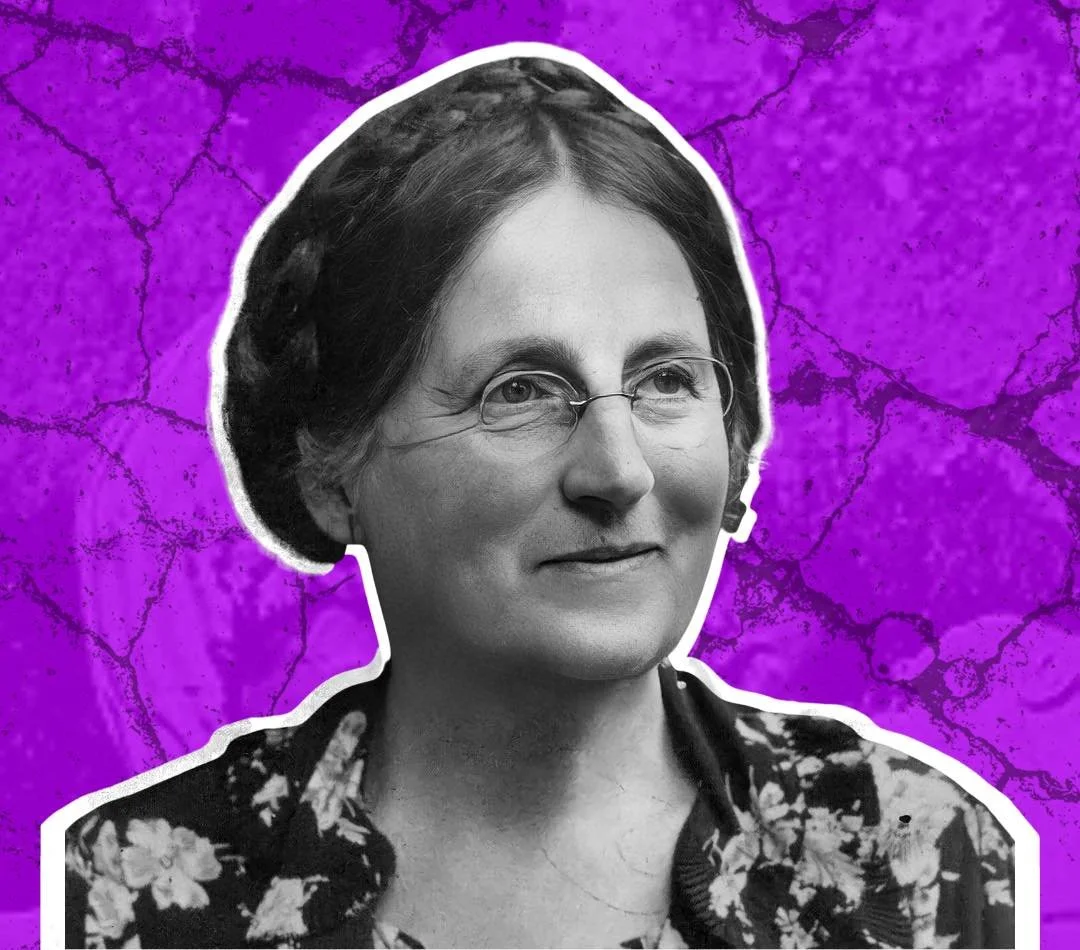Kathleen Lynn - Doctor, Suffragette, Republican, Socialist, Revolutionary
Kathleen Lynn was one of the most prominent women to have been involved in the 1916 revolutionary period, but one who was largely ignored until recent times. Her life work as a socialist republican and a doctor spanned over four decades.
Born in Mallaghfarry, just outside Killala, County Mayo in 1874 to Katherine Lynn and her husband Robert, a Protestant pastor, Kathleen went on to study medicine, graduating in 1899. During the early 1900’s she worked in a number of Dublin hospitals and ran her own private clinic from Belgrave Road, Rathmines, Dublin.
She met Helena Molony in 1913 while treating her and let Molony live with her while she recovered. The pair would have long political discussions and eventually Molony converted Lynn to the suffrage movement republicanism and socialism. Through suffrage activity she became closely involved with Constance Markievicz and subsequently James Connolly.
During the 1913 lock-out, Lynn volunteered at Liberty Hall handing out food parcels and providing medical treatment to the workers and their families. Becoming ever closer to Connolly, she joined the Irish Citizen’s Army in 1914 as a Medical Officer. Lynn was also a member of the Irish Women Workers Union and a contributor to the republican newspaper ‘Inghinide na hÉireann’ writing articles about her passions - health and childcare.
Women of Cumann na mBan and The Irish Citizen’s Army 1916
On Easter Monday 1916 Lynn was dispatched to City Hall, the first building to be occupied, under the command of Seán Connolly of the ICA. It was from the roof of this building that Lynn, along with Helena Molony and a few others, witnessed Seán Connolly being killed by a British sniper firing from Dublin Castle. There was nothing she could do to help him as he died almost instantly. Shortly after she attended to a young volunteer who had been shot in the shoulder.
When the British re-captured City Hall Lynn was taken into custody along with the other volunteers. She along with other female prisoners was with Molony and Madeline Ffrench Mullen in Kilmainham Gaol during the executions. There they heard the shots ring out early in the mornings as the leaders were shot. The presence of Markievicz in the condemned cell above added to the tense atmosphere with rumours circulating the prison of her impending execution.
After some time in Mountjoy Lynn was transferred to England where after pressure from her family, she was released into the care of an Irish Dr. Cusack. She met up again with Ffrench Mullen in London and soon they were both back in Dublin working from her Rathmines clinic again.
Both women re-activated their involvement in the republican movement, supporting prisoners in Frongoch and getting involved with Sinn Féin work. Lynn, Mullen and Molony were involved with the march from Liberty Hall to the GPO that marked the first anniversary of the Rising at Easter 1917.
St. Ultan’s Hospital
By 1918 Lynn and Mullen’s attention had turned to setting up the first hospital for sick children in Ireland. Finding a suitable property in Charlemont Street and with the help of other Sinn Féin women they made it suitable for patient care.
Their first patients were victims of the Spanish Flu epidemic, which would claim over 20,000 lives in Ireland and was just then sweeping across the country after World War One. Lynn got a supply of flu vaccine from a Dr. Crofton and successfully used it to inoculate many hundreds of people at risk, including over two hundred members of the Citizen Army.
Lynn and her assistant Brigid Davis were frequent visitors to the North Strand/ Newfoundland Street areas. Tuberculosis, Cholera and Typhoid were common in the desperate living conditions there. The doctors would gargle a drop of brandy before and after entering the dwellings of the poor in an attempt to inoculate themselves against the sicknesses.
Many parts of what is now the Irish Financial Services Centre were slums rented out by slum landlords who crammed as many tenants as possible into the shoddy buildings to maximise rents. Lynn was known for the calming effect she had on the children. Maire Comerford of Cumann na mBan recalls Lynn saying, “every child was an individual and must know himself, or herself, loved”.
Lower Gardiner Street, early twentieth century
On February 4th, 1918, Lynn spoke at a packed Mansion House gathering to celebrate the Bolshevik Revolution. Alongside other speakers like Markievicz, Maud Gonne, William O’Brien and Cathal O’Shannon, Lynn said “. . that some people were shy of acclaiming Russia, fearing that the cry of anti-clericalism might be levelled at them – a cry that had been raised against men and movements which the British Government had reason to fear.”
St Ultan’s Hospital was formally opened in 1919 after the building had been refurbished by a crew of Citizen Army volunteers organised by Stephen Murphy. It’s first patient was ICA member, Bill Oman who had been struck down with the flu shortly after his wedding.
In common with the vast majority of the women republican activists, Lynn rejected the Treaty with Britain and during the Battle of O’Connell St in 1922 Lynn was once again rushing around administering aid to wounded republican volunteers. She was at Cathal Brugha’s side when he succumbed to his wounds outside the Gresham Hotel. Lynn was elected as a Sinn Féin candidate in 1923 but abstained from taking her seat in the Pro-Treaty assembly.
The Gresham Hotel on fire 1922.
By 1927 Lynn had left Sinn Féin in despair of it’s reluctance to embrace social and health care reform. As early as 1924 the Free State administration had begun to roll back on the hard fought for gains won by women - a pattern that was continued by De Valera in the following decades. Lynn remained true to her socialist republican ideals throughout the 1920’s, 30’s and 40’s despite the growing anti-communist paranoia and the red scares of the time.
At St Ultan’s, Lynn fostered international research into tuberculosis (TB) eradication and in 1937 St Ultan’s became the first hospital in Europe to implement a BCG inoculation scheme which prevented TB. The BCG programme was very successful, being later expanded by Noel Browne, himself a TB survivor, who became Minister for Health in 1948. Despite the resistance of the Catholic Church to progressive public health programmes, TB was eradicated by the early 1960’s.
“ . .every child . . . must know himself, or herself loved.”
The benefits of the BCG programme in the lives of the Irish people were immeasurable. A colleague of Lynn’s from St. Ultan’s, Dr Pearl Dunlevy, continued the immunisation work after Lynn’s death and helped to achieve dramatic drops in cases of rubella, whooping cough and diphtheria. All of which made real substantive differences to the quality of life for thousands of working-class families.
Lynn’s lifelong companion Madeleine Ffrench Mullen died at the age of 63 in 1944. They had been virtually inseparable for the previous 30 years. Although the couple never openly declared the nature of their relationship, it is widely believed that they were lovers as well as close friends.
Kathleen Lynn and Madeleine Ffrench Mullen
Kathleen Lynn died at eighty one years of age on September 14th, 1955. She was buried in Deansgrange Cemetery, with crowds lining the streets to pay their respects as her funeral cortege passed by.
Kathleen Lynn’s legacy can be seen today in the thousands of people who are alive today because of the medical care that Lynn provided to their parents, grandparents and great-grandparents.
Her legacy can also be seen in the virtual elimination of tuberculosis and the extension of the immunisation programme to effectively eradicate measles mumps and rubella - a programme that overcame contemporary opposition from the Catholic Church and other right-wing forces.
Kathleen Lynn’s life-long commitment to her socialist republican ideals and her commitment to directly help the most vulnerable in Irish society serve as an inspiration to the people of Ireland today.







